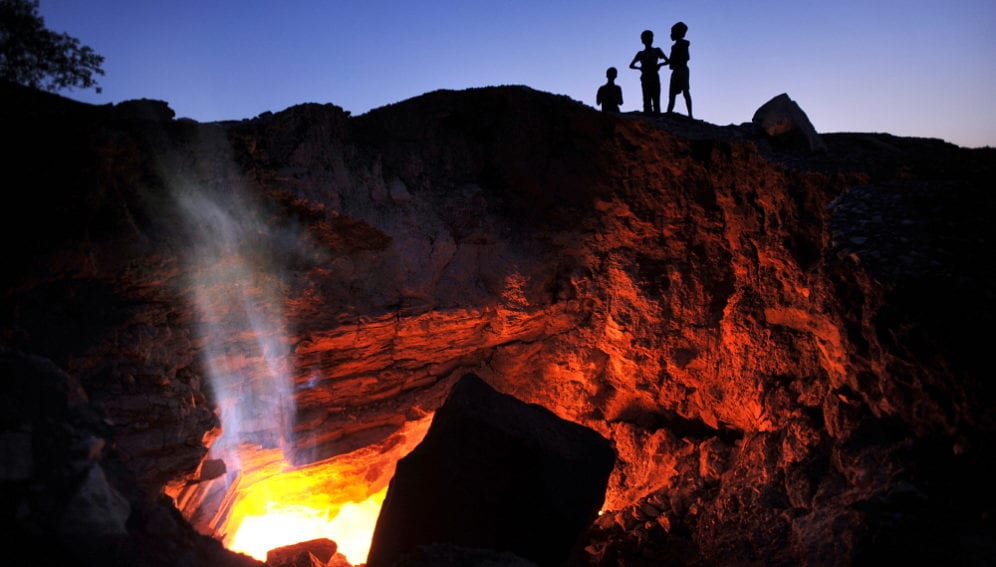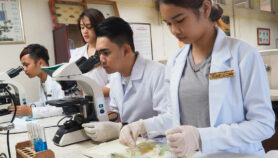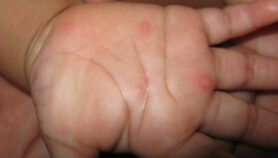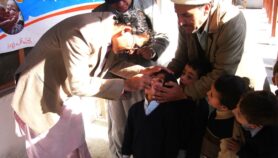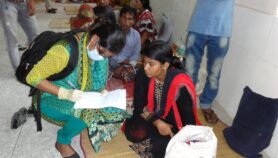By: Paul Icamina
Send to a friend
The details you provide on this page will not be used to send unsolicited email, and will not be sold to a 3rd party. See privacy policy.
[MANILA] Thousands of Filipino children risk their lives every day to mine gold, according to a research report by Human Rights Watch (HRW) on child labour and mining in the Philippines.
The field research was conducted in the provinces of Camarines Norte and Masbate, and interviewed 135 people, including 44 boys and 21 girls working in small-scale mining.
The children are among the estimated 300,000 Filipinos working in small-scale gold mines, about 18,000 of them children, and considered an important livelihood for poor communities in more than 30 provinces.
However, gold mining is back-breaking work that poses immediate risks and long-term health problems especially for kids. Some of the children dig for gold up to 24 hours, going up only for meals, says Juliane Kippenberg, associate children’s rights director at HRW and principal author of the report which was presented last 30 September at a press briefing.
Because many of the gold deposits are beneath the water table, “compressor mining” was developed where a narrow wooden shaft (about 70×70 centimetres) is dug into the bottom of shores, rivers and swamps.
The miners are lowered into pits as deep as 25 metres. The air is too thin to breathe and they get oxygen from a tube attached to a diesel-run air compressor at the surface.
Children work inside unstable pits that could collapse at any moment. They are exposed to carbon monoxide from the diesel compressors, increasing the long-term risk of lung cancer. Children working for extended periods in water often suffer itchy and infected skin caused by bacteria in the water.
Sometimes, the compressors break down and children have to come up fast. This could cause “the bends” or decompression sickness that causes joint pains, shortness of breath and embolism, a brain disorder.
The 65 child miners that HRW interviewed described how they were terrified when climbing down shafts or diving into pits. The researchers also talked to witnesses to a fatal mining accident, in which a 17-year-old boy and his adult brother were asphyxiated in a deep pit mine in September 2014.
The children process gold with mercury, a toxic metal, and risk irreversible health damage from mercury poisoning.
Michelle, 15, has the shakes from mercury poisoning. Three times a week, using a blowtorch, she melts mercury to mix it in the sand to bind with the gold.
“Mostly it’s my hands, but sometimes it’s my legs, and sometimes my whole body. I just tell myself I have to do this work to support my family,” says Michelle who started handling mercury at 8 years old and earns about US$10 a day. However, some kids earn just US$20 a month.
In 2014, large and small-scale mines produced about 18 tonnes of gold with a market value of over $700 million, according to the Philippine Mines and Geosciences Bureau (MGB).
There are no reliable figures on small-scale gold mining “because an estimated 90 per cent of the gold is smuggled out of the country and not traded at government-controlled buying stations,” says Kippenberg. “It is estimated that 70-80 per cent of gold in the Philippines originates from small-scale gold mining.”
MGB Assistant Director Elmer Billedo concedes that they only have five technical personnel who monitor artisanal mining. The only viable option he says is to deputise the local police and local government to monitor small-scale mining and prevent them from using mercury.
This article has been produced by SciDev.Net's South-East Asia & Pacific desk.


